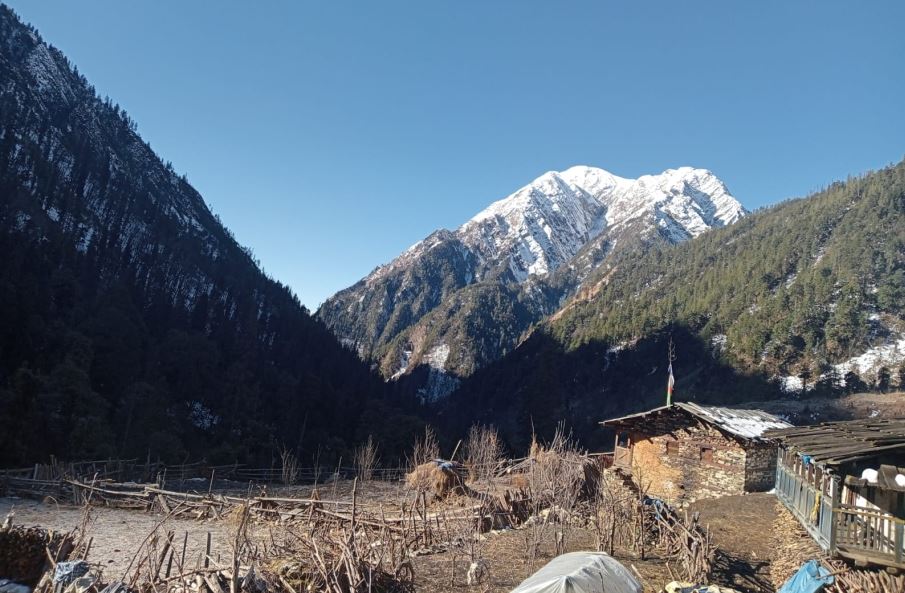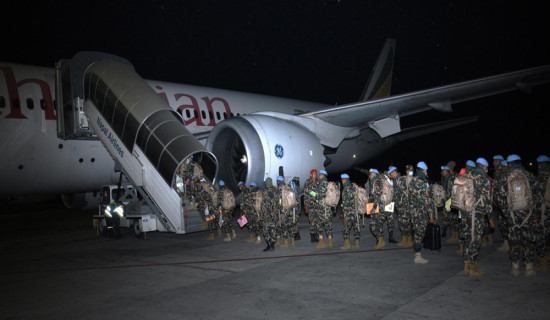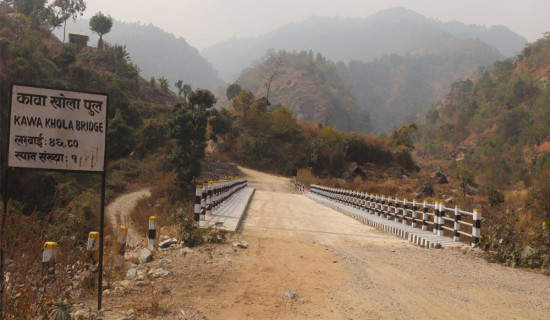- Sunday, 23 February 2025
Gumba Gaun in Bajura: Unvisited by local, provincial leaders
By Sher Bahadur Sarki,Bajura, Feb. 23: Gumba Gaun is located in a particularly remote area of Bajura district, in the northeastern region of the Himali Rural Municipality, Ward No. 3. Even today, it is considered a remote region in Bajura. Despite this, it remains largely forgotten by the provincial and federal governments, except for one local representative who has visited the village lately.
During elections, the candidates visit other villages for votes but hardly visit Gumba Gaun. Bajura district itself is known as one of the isolated districts in Nepal and this particular rural municipality is more difficult to access than other local bodies in the district.
The village, situated at nearly 3,500 feet above sea level, has remained largely inaccessible for decades. Until recently, there was no road and the only path for locals to travel was a treacherous narrow trail. Today, only 34 households reside here. The village is surrounded by steep rocks—Chalgauda, Garbhgauda and Potya—which pose significant challenges for movement.
When navigating these rocky paths, livestock such as goats, cows and even horses have lost their lives, and villagers have risked their own lives, often relying on precarious paths, such as one at the edge of a cliff, to carry out essential tasks.
Before the construction of the road in 2022, it would take villagers up to seven days to reach the nearest ward office. The election of Govindra Bahadur Malla as the chairman of Himali Rural Municipality in 2022 marked a turning point. After he was elected for the second term, he allocated Rs. 3.8 million to create a safer trail, drastically reducing travel time to just three days on foot.
Now, 34 families reside in the village, with 64 eligible voters. In the 2017 local-level polls, the CPN-UML candidate got 30 votes, with only one vote cast for the Nepali Congress candidate. However, in the 2022 local-level election, the NC received 63 votes, showing a shift in local political leanings.
Before the trail was made, it would take seven days to reach the village. With the new pathway, however, it now takes just three days on foot, which is still a daunting journey, given the rugged terrain and isolation.
Despite the improvements, development has been limited due to the village's remoteness. The local government's ability to extend basic infrastructure like roads and electricity is hindered by the terrain and the substantial costs involved. Chairman Malla has expressed that it is beyond the capacity of the local government to bring significant development to Gumba Gaun.
The village has long been ignored by both political leaders and government officials. The only exception was in 1990, when a chief district officer visited in, and again in 2022 when Malla, the current chairman, visited and worked on the trail project.
Before the new trail was constructed, the villagers would travel to the nearby town by crossing rugged hills, often risking their lives in the process. However, with the recent developments, it is now much easier for them to travel on foot to the municipal office.
Apart from limited farming of potatoes and beans, the primary livelihoods in Gumba revolve around the trade of medicinal herbs and animal husbandry, with many villagers raising goats, cows and horses.
During election time, staff are flown in by helicopter to deliver election ballots, given the difficulty of access.
Although officially a part of the Himali Rural Municipality, Gumba Gaun is often regarded as a separate province due to its isolation. It is yet to be seen whether this village should be further developed within its current context or relocated closer to other municipalities for better access to services. There have been numerous efforts to encourage relocation, but the villagers have stubbornly refused to leave.
In the past, the village lacked basic services like healthcare, education, and drinking water. In the 2017 local elections, even though Chairman Malls was elected, he was unable to make much progress at that time. However, after returning to office in 2022, he managed to establish a basic health clinic and a primary school, greatly improving the quality of life for the villagers.
This remains a long-term struggle for development, and while progress has been made, the road ahead remains challenging.




-square-thumb.jpg)












